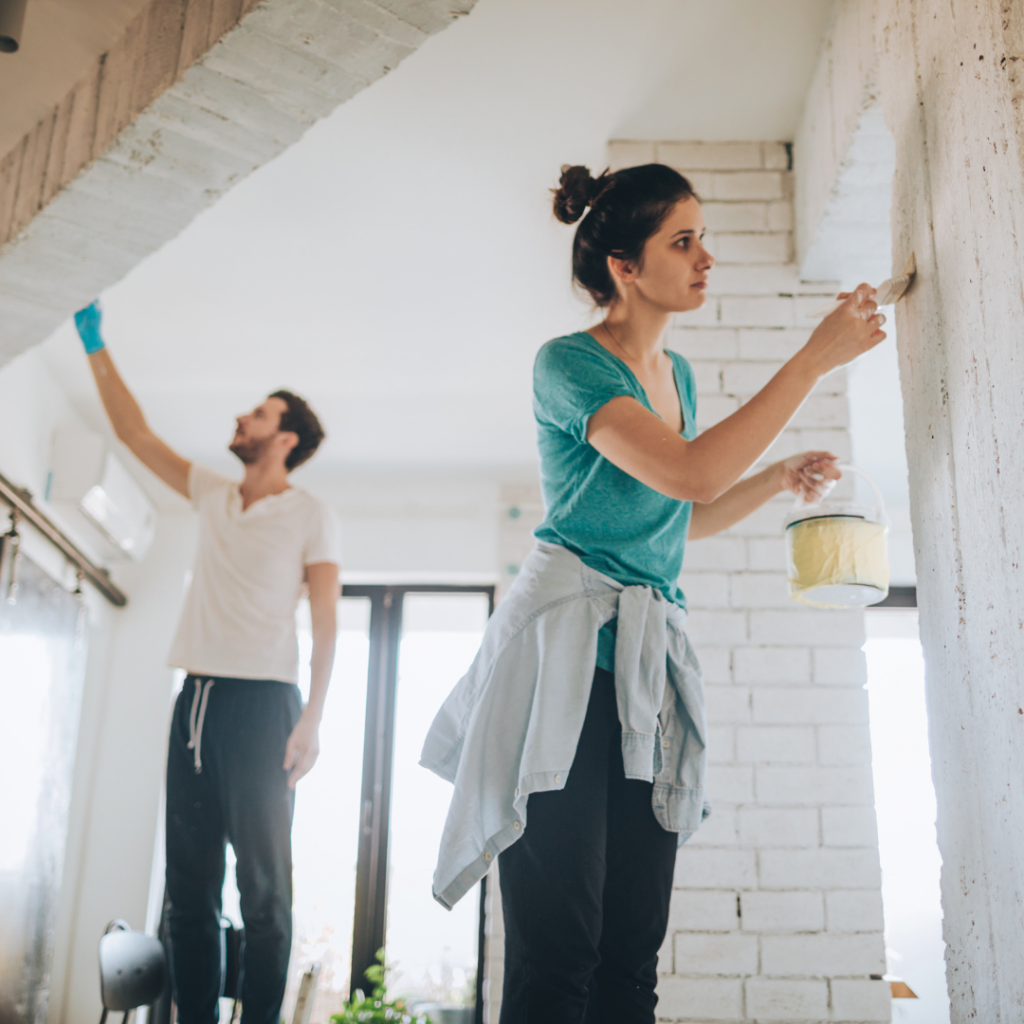
Can Organic Paints Do Better Than chemically-induced Ones?
Painting can be both relaxing and enjoyable. It can help transform your house into a home; a more welcoming space. It can be used to create beautiful artwork that can be hung or displayed in various ways. It can also be used to express emotions and ideas that can be shared with others. Painting can be both therapeutic and creative and can be used to create something that is truly one of a kind.
For this blog, however, we would be sticking to painting the walls, interior, and exterior of the house. If you are a beginner, you may need to keep in mind that painting is not easy; you have to be patient, and you need to be dedicated to the task. In case you feel like it is too much of a hassle to take the task entirely on your own shoulder, you can consider enlisting the help of a local handyman in Commerce Township (or wherever it is that you are based).
As much as patience is important for taking up any home painting work, so is the quality of the paint. Not sure how it matters? We’ll help you understand. Here we go:
Using natural paints for your home comes with the benefit of reducing toxic exposure for you and your family. Chemical paints are not regulated like organic paints and therefore contain pollutants like arsenic and formaldehyde. On the other hand, organic paints are made of regulated ingredients and contain no toxic materials. What organic paint makers don’t tell you, however, is that their paints are not necessarily better for you and may even be worse for the planet.
Organic paints, also known as natural paints, are paints that utilize only natural materials, such as plant pigments, minerals, and water. However, they do not necessarily use natural plant pigments and instead typically use synthetic, chemical pigments.
Giving your home a fresh coat of paint is a fantastic way to rejuvenate it. When considering taking on a painting project, you have two options – doing it yourself or hiring a professional. If you’re fairly handy and have the time, painting the interior rooms on your own can be rewarding, though challenging at times. Seeking the help of an experienced painter similar to this local painter and decorator will likely ensure that your walls and trim are coated just right.
Whichever route makes the most sense for your schedule and budget, it’s crucial to opt for paints with low or no harmful chemicals, especially since they’ll be used indoors where your family resides. Carefully read the labels and consider natural paint options like milk paint or low-VOC latex options. These earth-friendly choices are not only versatile, attractive, and kinder to your wallet than buying entirely new furnishings but healthier for you and your loved ones as well. With some prep work and the right materials, you can give your home a fresh new feel just by picking up a paintbrush yourself or finding the ideal professional painter for the job.
Additionally, it’s wise to check whether the paint is water-resistant. If not, after painting, the paint might retain moisture, leading to wall cracks and mold growth. In that case, you may need to reach out to specialists for mold remediation in Hartford, CT, or your local area. While finding paint that is completely 100 percent water-resistant can be challenging, you can reduce the risk of damage by opting for durable and long-lasting natural paints for your home painting projects. This choice enhances the longevity of the paint and minimizes the likelihood of moisture-related issues.
Chemically-induced paints are made by mixing or blending tiny particles of metal oxide, pigments, and other chemical elements. It is commonly applied to walls, ceilings, and other surfaces but can also be used on floors, furniture, and appliances. Unlike regular paint, chemically-induced paint dries in 15 minutes and is exceptionally resistant to water, chemicals, and stains. It is also resistant to peeling and blistering, making it the top choice for those who want to paint their home.
One’s paint, or acid, is a type of spray paint that releases an acid that eats away the surface of the object it is painted on. The chemical reaction between the paint and the acid requires heat, so the paint needs to be applied using a spray gun. It is usually applied in several passes, very thinly, and heated between layers to cure the paint. A sharpie can be used to draw shapes and lines over the paint before it is cured.
Types of Organic Paint
Clare Paint is bold, vibrant, and beautiful. The three-color choices, Charcoal, Butter, and Classic Black, create a versatile color palette. The formula evens out, absorbs quickly, and is durable. Overall, this brand is on-trend, fresh, and captivating.
Milk paint may be new to you, but it’s been around for centuries. It is made by grinding mineral-based pigments into milk, which is then stirred and mixed with water. The mixture is then poured into a mold and cooked on an ironing board, causing the paint to shrink and harden. The resulting paint has a gorgeously soft, matte finish.
Earth Pigments paints, Green Paints, and recycled paints are environmentally friendly, and non-toxic, making them ideal for use nowadays. They are made from earth pigments and organic pigments. These are therefore non-toxic, high-quality water-based paints that do not contain any potentially hazardous ingredients.
Types of Chemically-induced One’s
Acrylic polymer paints are very durable and water-resistant. They dry quickly and are flexible, making them ideal for surfaces like walls and floors. They come in a wide range of colors and are a relatively inexpensive option. They are good for surfaces where spills or splatters are likely to happen, like bathrooms and kitchens. It’s worth noting. However, that acrylic polymer paints are not suitable for outdoor use since they are not resistant to sunlight.
Epoxy paints are industrial coatings with high resistance to heat, chemicals, abrasion, moisture, and impact. They’re used for a variety of purposes, including flooring, industrial coatings, automotive coatings, and marine coatings. They usually require a specialized application since they tend to dry quickly.
Alkyd paint: Painting with alkyd paint on a surface is as much an art as it is a technique. You need to have the perfect combination of brushes, the right primer, the viscosity of the paint, and the right amount of sanding. Now, what if I told you that all of these could be automated?
There was a time when painted surfaces in our homes were left to whatever the painters used. The materials weren’t regulated, and you weren’t sure if your walls would be lead-free. But with natural and organic paints, you don’t have to worry about these unknowns.


